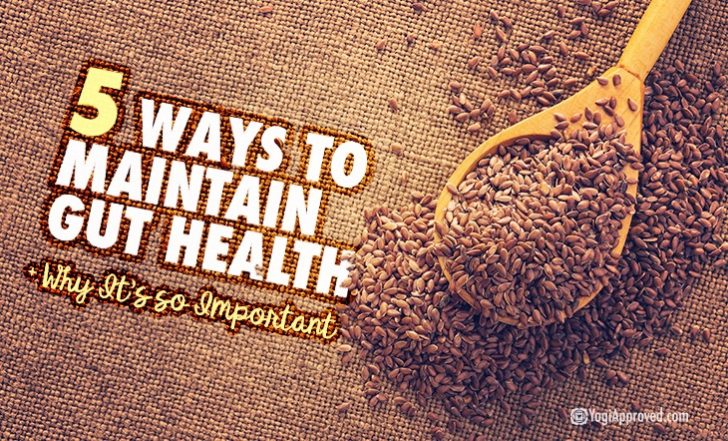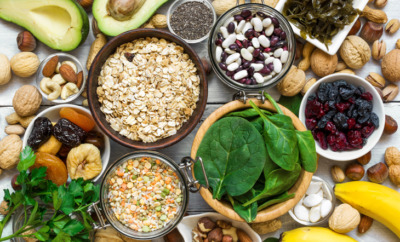Mighty Magnesium: What It Does For Your Body and Why You Need It In Your Diet

You may not know it, but magnesium is all around us. It is a widespread compound in the crust of the Earth, found in mineral deposits and mountain ranges. Oceans and rivers are even more rich in this mineral – a microbial ecology analysis found the Dead Sea contains a significantly high concentration of biologically available magnesium.
This powerful element is also an incredibly important nutrient for the human body. Magnesium is the fourth most common mineral within body cells and is a co-factor for hundreds of metabolic reactions, including making protein and DNA! It is also an essential electrolyte that the nerves, muscles, and heart require to function properly.
So what exactly does magnesium do for human health? What foods is it found in? And just how much magnesium should you be consuming per day? Read on to learn more!
What Does Magnesium Do For Your Body?
Think of magnesium as the ultimate helper molecule whose existence allows other minerals and enzymes to get their jobs done. An important role for magnesium is assisting in the active transport of calcium and potassium ions over cell membranes.
This process allows for nerve impulse conduction, which helps send messages through the brain and nervous system, as well as proper muscle movement like contraction and relaxation. Calcium and potassium are also needed to maintain normal heart rhythm, so magnesium gives them the boost they need to cross the membrane and get pumping!
Magnesium is an essential electrolyte that the nerves, muscles, and heart require to function properly.
Magnesium is critical for bone health, structural integrity, and energy metabolism. It aids in the activation of Vitamin D, which regulates bone calcium and phosphate levels to promote proper growth and maintenance.
This mineral is also found in teeth and contributes to their structural and physiological health. It is involved in the formation of proteins from amino acids, the creation and repair of DNA and RNA, and the breakdown of macronutrients into energy that fuels the body.
Think of it as the ultimate helper molecule whose existence allows other minerals and enzymes to get their jobs done.
Additionally, this mineral has been associated with improvements in mental health conditions like depression and anxiety. A 2015 study in the Journal of the American Board of Family Medicine found that individuals under age sixty-five with very low magnesium dietary intake were more likely to experience depression symptoms.
This Mineral Prevents Migraines, Reduces Anxiety + Fights Depression (Is It In Your Diet?)
Multiple studies using magnesium supplements showed significant improvements in symptoms of both depression and anxiety.
Where Do I Find Magnesium In Foods?
Magnesium is present in a variety of different foods, many of which are plant-based. Nuts, seeds and legumes are particularly rich in magnesium, while fruits and vegetables including spinach, potatoes, bananas, raisins and apples are notable sources as well.
This mineral is also found in fortified cereals, dairy products like milk and yogurt, and fish such as salmon and halibut.
Top 5 Food Sources of Magnesium:
1. Pumpkin Seeds

Just one ounce of roasted pumpkin seeds contains 156 mg of this mineral! They make a great snack on their own but are also delicious in salads and grain/veggie bowls.
2. Chia Seeds

These nutrient dense seeds contain roughly 26% of the daily recommended magnesium in a 1-ounce serving. Chia seeds are also excellent sources of fiber and plant-based omega-3 fatty acids.
These Health Benefits of Omega-3 Fatty Acids Will Surprise You
3. Nuts

Almonds, cashews and peanuts are also substantial sources. Nut butters like peanut butter are rich in the mineral as well.
4. Spinach

One half cup of boiled spinach contains 78 mg of magnesium. Try adding this spinach magnesium boost to breakfasts like frittatas or quiches, or highlighting its flavor with this delicious Indian Spinach and Tofu (Palak-Tofu) recipe!
5. Soy

Soy foods, particularly soymilk and edamame, are good sources of magnesium.
The Mood Of Food: 5 Foods That Help With Anxiety and Naturally Ease Stress
How Much Magnesium Do I Need?
The daily recommended intakes for this mineral vary by age group and biological sex. According to the National Institute of Health the DRI is 410 mg for 14-18 year old boys and 360 mg for 14-18 year old girls, 400-420 mg for adult men and 310-320 mg for adult women.
Intakes should increase during pregnancy (400 mg for teens, 350-360 mg for adults), while lactating teens and women should follow the DRI for their age group.
Data from the National Health and Nutrition Examination Survey (NHANES) determined that roughly 60% of Americans are not consuming the recommended amounts of magnesium from food. In most healthy individuals, the kidneys will retain this mineral from being excreted if intake is insufficient.
However, certain groups of people are at risk for magnesium deficiency, including those with gastrointestinal diseases, Type 2 diabetes, chronic alcohol dependence and older adults.
Magnesium deficiency can become symptomatic and eventually quite serious.
Symptoms include loss of appetite, nausea, vomiting and weakness, and in the extreme form can cause muscle contractions and cramps, seizures, personality changes, abnormal heart rhythms and coronary spasms.
What About Magnesium Supplements?
There are several forms of supplements available – magnesium oxide, citrate, chloride, and sulfate are perhaps the most common. The bioavailability of magnesium varies between supplement types, the forms which dissolve well in liquid tend to be more effectively absorbed in the gut.
This supplement is also a main ingredient in certain laxatives and can be found in some antacids which treat heartburn and acid indigestion.
While there are concerns associated with magnesium intake from food, there is a dosage upper limit (350 mg/day for adults and children between 9 and 18 years) for magnesium supplements and medications due to the potential for side effects ranging from diarrhea, nausea and abdominal cramping to irregular heartbeat and cardiac arrest.
According to a study in the Journal of the American College of Nutrition, high doses of zinc supplements were found to interfere with magnesium balance in the body. Additionally, it has the potential to interact with several drugs, including proton pump inhibitors, antibiotics, diuretics and blood pressure medications.
Always consult your doctor and dietitian to determine how much dietary magnesium you need and whether or not supplementation is warranted.
The Takeaway: Magnesium and Health
Magnesium is a key player in several of the most critical metabolic processes and functions in the human body, from a healthy heart to healthy bones. Many cells, enzymes and organs are reliant on it, which is why the kidneys work so hard to keep internal magnesium levels adequate.
There are many food sources of this mineral (most of which are vegetarian and vegan friendly!) and obtaining magnesium through diet is highly recommended. Getting your fix through food is a great way to give your body a boost in all it does for you!
All included information is not intended to treat or diagnose. The views expressed are those of the author and should be attributed solely to the author. For medical questions, please consult your healthcare provider.


This Month's Letter
From the Editor
Monthly motivation and food for
thought from our founder.





























